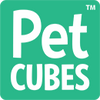Shopping Cart ( )
Your cart is currently empty.
Raw dog food is a popular diet plan for many pet parents due to its various benefits in aiding a dog’s health. However, does the Association of American Feed Control Officials (AAFCO) have any regulations or guidelines for this meal plan?
In this article, let’s take a look at whether raw dog food meets the AAFCO guidelines.
The Association of American Feed Control Officials (AAFCO) is in charge of setting feed standards and making recommendations for companion animals and cattle.
AAFCO, however, does not test pet food samples for compliance with label guarantees, nor does it test raw foods. Therefore, it is the responsibility of the pet food producer to make the pet food in accordance with AAFCO guidelines.
Raw feeding is exactly as the name implies: you feed your pet raw food rather than the more widely accessible processed meals.
Raw diets often include raw meat as well as other uncooked items such as fruits and vegetables.

Photo by engin akyurt on Unsplash
Diet, just as it is in humans, is a significant contributor to overall health. You are contributing to your dogs' ideal health in several ways by feeding them raw dog food.
You may have noticed on the label of many raw pet meals that they are not "complete and balanced" according to AAFCO guidelines. This is because the AAFCO criteria are based on cooked or processed foods, which have already lost nutritional content due to cooking or processing.
The use of raw materials that may have come from diseased or handicapped animals as raw animal feed or raw pet food is forbidden.
This is why raw meals are often cooked in high-temperatures, or rendering, making such items safe for animal consumption.
However, high temperature cooking denatures proteins and collagen, eliminates some essential nutrients, and makes food less easily digestible and accessible in general.
This implies that essential vitamins and minerals must be reintroduced. Gently cooking may be a suitable alternative to raw in terms of retaining nutrient integrity.
Since a raw food diet is unprocessed, it technically does not meet AAFCO guidelines. Nevertheless, raw meals are highly nutritious for your dog, therefore, there is no need to add synthetic vitamins or minerals because this diet has almost everything a dog requires when balanced correctly. AAFCO nutrient values can still be targeted, even if it is a fresh diet.
Raw pet food, according to the Food & Drug Administration (FDA), poses substantial health hazards to pets and their owners.
Meat, ground bone, organ meats, raw eggs, vegetables or fruits, and some dairy items make up most raw pet food.

Photo by KWON JUNHO on Unsplash
Due to these raw components, cross-contamination of germs, such as salmonella, to humans has become a more significant issue.
These germs might be harmful to members of the family, particularly youngsters, the elderly, and those with weakened immune systems.
Although dogs and cats are more resistant to these germs than humans, they are susceptible to infection and can become extremely sick.
Therefore, learning the safety practices and procedures with regards to handling raw dog food is the single greatest way to avoid infection with these foodborne germs.
So, here are a few tips according to the FDA on how to prepare raw pet food:
The best raw meal depends on what your dog’s preferences and needs are. For example, if your dog has skin allergies, salmon would be the better choice compared to chicken. On the other hand, if your dog is allergic to chicken, you can opt to feed it turkey meat.
You should choose a raw diet that works best for your dog and enhances its health at the end of the day.
Nonetheless, here are some examples of raw dog food that can be included in your dog’s dietary plan:
Learn more about what raw meat is good for your dog and its benefits here.
Although the AAFCO does not approve raw dog food, it is still a good diet plan for your canine. You can try out Petcubes’ Raw Dog Food. Our meals are made by professionals who strive to ensure the food given to your dog is safe and nutritious.
Dr Francis is one of the top wildlife nutritionists in Asia. Originating from Montreal, Canada, he left at 21 to pursue his Masters and subsequently a PhD in wildlife nutrition at Oxford Brookes University. Instead of taking the path of common animal science to learn about farm animals, or through the veterinarian space and taking a certificate in nutrition, he took the road less travelled to dive deep into the world of animal ecology, metabolism and nutrition.
You have no items in wishlist.
| Title |
|---|
| Price |
| Add to cart |
| Type |
| Vendor |
| Title |
|---|
| Price |
| Add to cart |
| Type |
| Vendor |

